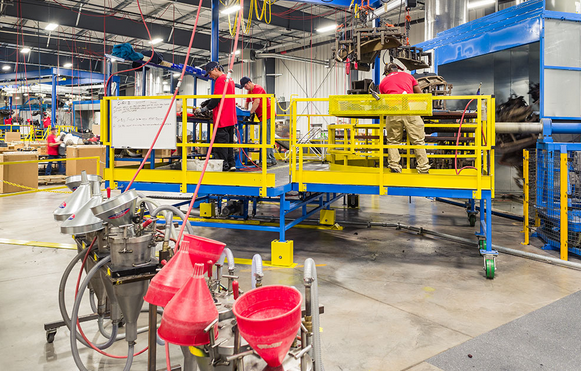
Innovation and Efficiency in Plastics Rotomolding
Rotomolding, often known as rotation molding, is really a procedure for creating sophisticated plastic-type shapes by heating and revolving a fungus that’s filled up with plastic-type material natural powder. This process is traditionally used to make huge hollow things including tanks, storage units, and playground gear. Selecting the best materials for Rotational Molding is critical to guarantee the closing merchandise satisfies the desired components and gratification criteria. In this article, we will investigate the different materials designed for Rotomolding in addition to their concerns.
Polyethylene:
Polyethylene is considered the most commonly used plastic-type material for Rotomolding. This functional material comes in numerous levels, densities, and colours. Reduced-denseness and linear reduced-density polyethylene are well-known options for items that call for outstanding effect amount of resistance, versatility, and substance opposition. Higher-denseness polyethylene can be used for items that demand stiffness, heating resistance, and load-displaying capacity. Polyethylene is also relatively low cost, making it a beautiful choice for big-size generation.
Polypropylene:
Polypropylene is another popular substance for Rotomolding due to its exceptional power-to-body weight percentage, substance amount of resistance, and energy balance. Polypropylene is often accustomed to create sanitary and sanitary items like health-related products, meals containers, and h2o tanks. Furthermore, it features a higher melting stage, rendering it suitable for items that need substantial-temperatures amount of resistance.
Nylon material:
Nylon material is a higher priced selection for Rotomolding but comes with many benefits. It provides outstanding mechanical attributes, which include higher tensile durability, abrasion opposition, and affect opposition, that make it well suited for commercial software like equipment, pulleys, and components for weighty devices. Nylon material is additionally highly resistant against substances and Ultraviolet light-weight, rendering it ideal for outside applications.
PVC:
Pvc material can be a thermoplastic which has excellent chemical substance and weather conditions opposition, which makes it suitable for outside and water-resistant models like vessel docks, water tanks, and piping. Pvc material even offers exceptional flames opposition, rendering it a good choice for products which demand blaze basic safety.
Polyurethane:
Polyurethane is a great-overall performance fabric that’s perfect for products that demand excellent toughness, wear level of resistance, and abrasion amount of resistance. It is used to produce tires, rollers, along with other industrial items that are subjected to strong wear and tear. Polyurethane is also a good choice for goods that need high resilience and adaptability.
In short:
When deciding on the best fabric for Rotomolding, it’s essential to think about the product’s components and specifications. Components like polyethylene, polypropylene, nylon, PVC, and polyurethane are all fantastic selections for different programs. Each material does have its distinctive advantages and disadvantages, and picking the right one particular to your merchandise needs careful consideration. By partnering having a reliable Rotomolding supplier which has knowledge of numerous components, you can make sure that your item is made to the highest quality requirements and fits your needs.